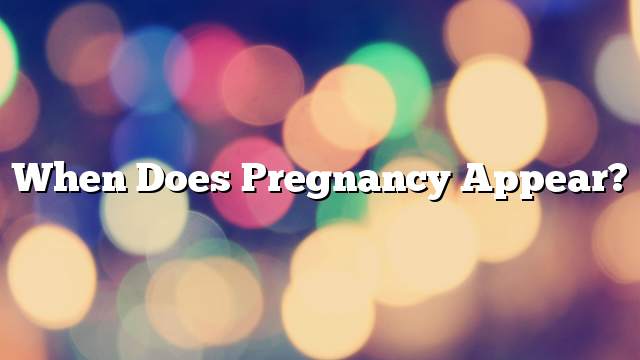Pregnancy
Pregnancy occurs when the sperm fertilize one of the mature eggs after the liberation of the ovary in the fallopian tube, then the fertilized egg from the fallopian tube to the uterus to implant it, and the uterus has been prepared for pregnancy by increasing the thickness of the wall to receive fertilized egg and the formation of an environment The body produces a chiropractic hormone called human chorionic gonadotropin (hCG), which in turn prevents the shedding of the lining of the uterus, thus preventing menstruation.
Pregnancy time
Pregnancy can be detected by a pregnancy test. The pregnancy test is designed to detect the pregnancy hormone that begins shortly after the Embryo reaches the uterus. There are two types of tests that can be performed; urine examination and blood test, and the following A simplified explanation for each.
Urine examination
Urine Test can be performed at home or in the clinic using the attached device. It is placed in the container where the woman has collected urine or exposed to the urethra during urination. This examination is quick and easy. On the result once the change in the examination tool is monitored after waiting a few minutes according to the instructions attached to the examination, and advised to perform this examination after several days of absence of menstrual cycle, it is worth mentioning that the urine test is 97% accurate if done correctly, but can give Wrong result if done at a good time Of pregnancy, or when applied incorrectly. Therefore, if the result of the examination indicates that there is no pregnancy but the woman still has symptoms of pregnancy, it is advised to repeat it after a week or see the doctor for a blood test.
blood test
A blood test can detect the presence of a pregnancy earlier than a urine test, about 7 to 12 days after the expected pregnancy. In addition, a blood test can reveal the proportion of the pregnancy hormone found in the blood of the pregnant woman ; There are two types of this examination; examination looking for the presence of pregnancy hormone, and another test measures the proportion of pregnancy hormone in the blood, where the proportion of pregnancy hormone doctor in the detection of pregnancy-related problems.
Pregnancy symptoms
It is not possible to rely on symptoms to judge the presence of pregnancy, pregnancy must be conducted as we mentioned, because the symptoms vary from one woman to another, and vary from pregnancy to another in the same woman, and similar symptoms of pregnancy with symptoms of the menstrual cycle, including:
- Morning Sickness: Nausea can occur at any time of the day, but often occurs in the morning, and the cause of nausea is due to hormonal changes that occur as a result of pregnancy.
- A few drops of blood, in addition to abdominal pain in the abdomen, because of the adhesion of fertilized egg in the lining of the uterus.
- Sensitivity of the breasts, swelling, and darkening of the area surrounding the nipple.
- The appearance of white secretion due to increased vaginal thickness.
- Absence of menstrual cycle.
- General fatigue and exhaustion.
- frequent urination.
- Constipation.
- Headaches.
- Mood changes.
- Back ache.
- Dizziness and fainting.
Stages of pregnancy
Each trimester lasts about three months, with specific hormonal and physiological changes occurring every third. These changes include:
First trimester
The fetus begins to grow in the uterus of the mother in the form of a group of cells, and the size of the uterus then equivalent to hand grip, do not notice an increase in the size of the abdomen in this third of pregnancy, and pump the heart of the mother blood at a higher rate at this stage, and may appear some physical symptoms on women, Such as the sensitivity of the breasts to touch, the appearance of the skin dry or greasy appearance, and nausea that occurs during the day, it is worth mentioning that some women do not suffer from nausea, and not suffering from nausea does not indicate the existence of health problems in the fetus. It should be noted that the period between the eighth week A tenth of pregnancy is an important period for forming members Key vitality in the fetal body.
Second trimester
In the second trimester, most of the unpleasant pregnancy symptoms that control the first trimester of pregnancy, such as the sensitivity of the breasts, nausea, and so on, disappear. The woman’s abdomen begins to appear clearly in this third. The people surrounding her manifest the appearance of her abdomen. Weight gain is obvious, and the symptoms appear on the pregnant woman in this third as well; the height of the rib cage is approximately 5 cm to accommodate the size of the growing uterus.
Third third
The fetus continues to grow in this third of pregnancy, and often moves the child’s head down, which creates pressure on the bladder of the mother’s urine, which in turn causes frequent urination, and this may feel tired and tiredness of the mother and the occurrence of swelling in the mother’s limbs phenomenon called edema The mother may suffer from the descent of a yellow substance called Colostrum from the nipple of her nipple. It should be noted that the weight of the mother in this third is less than in the third The second.
